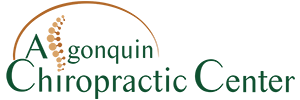Herniated Disc Treatment in Algonquin
Reduce Back Pain with Chiropractic Care for Your Herniated Disc!
Did you know that back pain is the leading cause of disability worldwide? In fact, back pain is so prevalent that a 2020 study showed that it was responsible for 69 million years lived with disability (YLDs). One of the most common sources of back and neck pain is a herniated disc, which can happen anywhere along the spine and is most common in the lower back at L4-5 and L5-S1.
Many living with back pain (whether mild or debilitating) seek help from their primary doctors, only to be given potentially addictive medications and risky surgeries. But it doesn’t have to be that way. Back pain doesn’t have to be permanent, and safer, more effective herniated disc treatment options are available. Read on to discover how we at Algonquin Chiropractic treat this condition.
Avoid the Pitfalls of Quick Fixes
Too often, people jump to conclusions about their herniated disc treatment. They assume that popular “quick fixes” like prescription opioids, steroid injections or surgery will solve their problem.
There are three problems with these options. Including that they:
- Are not as effective as people would like.
- Come with significant risks of side effects.
- Pose serious health risks, including worsening of the problem.
At Algonquin Chiropractic, we don’t want to put you at risk of getting addicted to painkillers. Nor do we want you to rely on epidural steroid injections, which may only provide temporary relief. And we certainly want to help you avoid the risks of surgery.
Therefore, we use medication- and surgery-free treatments to help our patients overcome their pain and improve their quality of life.
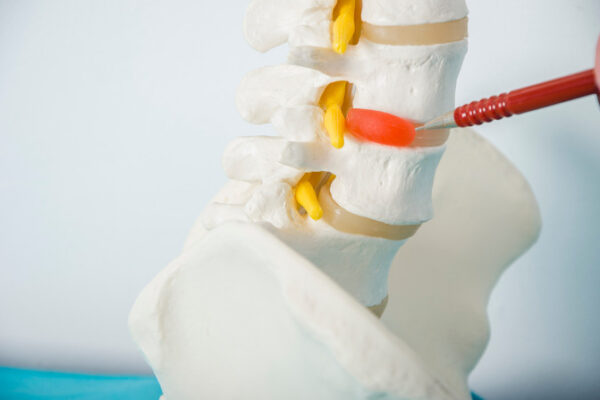
Discover the Algonquin Chiropractic Difference
If you come to Algonquin Chiropractic for herniated disc treatment, you will receive chiropractic care tailored to your needs. We will thoroughly examine your herniated disc and determine the best course of action.
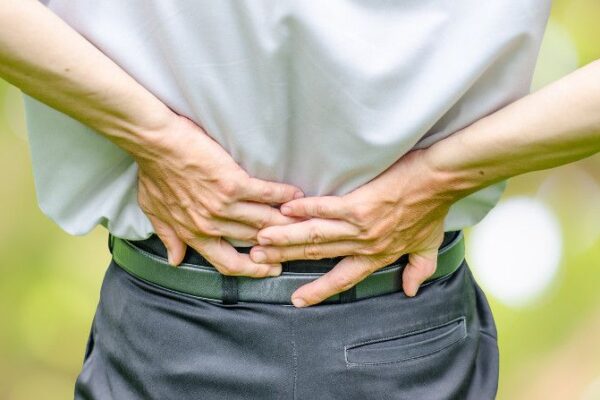
Your personalized treatment plan may include any of the following techniques:
- Cox Technic– gently decompressing the spinal discs and nerves
- Spinal adjustments – restores normal spinal biomechanics, decreases pain and relaxes tight muscles
- Electrical Muscle Stimulation– reduces pain and inflammation
- Vibration Therapy– improves core strength and posture faster than traditional rehab
- Super Pulsed Laser– decreases inflammation, increases cellular energy and quickens soft tissue repair and regeneration
- Custom Orthotics– improves foot alignment, which improves the functioning of the feet, knees, hips, pelvis and spine
- Spinal Bracing – stabilizes and decompresses spinal discs and nerves
By effectively combining these treatments, we have helped many patients achieve our first goal — a 50% improvement within the first 2-4 weeks! Of course, we cannot guarantee these results. But what we can promise is to work with the patient to get the best possible results and adjust the treatment strategy as needed.
Receive Expert Advice on How to Reduce Pain
One of the worst things about a herniated disc is how seemingly harmless activities, like sitting, turning in bed or lying down, can worsen the pain. We understand how frustrating this truth can be, and we want to help.
We assist our patients by teaching them simple activities they can do every day to decrease their pain. For example, patients can do many gentle stretches to reduce their discomfort. We also recommend many other home remedies, including ice, topical analgesics and better sleep positions.
Hear From One of Our Herniated Disc Patients
Enjoy Relief from Your Herniated Disc Pain
A herniated disc doesn’t have to mean life-long pain or disability. Herniated disc treatment doesn’t have to mean potentially addictive medications and risky surgeries. At Algonquin Chiropractic Center, we offer a safer, more effective solution to your back pain with zero adverse side effects.
If you live near Algonquin, IL, and believe you have a herniated disc, please don’t hesitate to contact us! We want to work with you to bring you the relief you deserve.
Do You Have Lower Back or Neck Pain? Find Out Why Herniated Disc Treatment is Your Best Option.
Are you suffering from lower back and hip pain? What about neck or shoulder pain that feels like burning or throbbing? Do you have pain, burning, weakness or numbness in your arm or leg? If you’re unsure of the root cause behind these symptoms, you could have a herniated disc.
Herniated discs are a common cause of back and neck pain. You may have heard of athletes suffering from herniated discs after a sports injury. However, they can be caused by numerous factors outside of athletics. If not treated properly, herniated discs can lead to chronic pain, disability, depression, weight gain and a host of other problems.
But what is a herniated disc? What causes this common pain? And how do you find relief from a herniated disc? Read on to learn everything you need about herniated disc treatment!
Table of Contents
Here is a list of quick links to jump to the different sections in this guide:
What is a Herniated Disc?
First off, what is a herniated disc? At its most basic level, a herniated disc is an injury to the cushioning and connective tissue between vertebrae.
Let’s briefly break that down to see what exactly happens with this injury.
Your spine is made up of individual bones that are connected between soft, cushiony discs. These discs are round with tough outer cartilaginous layers surrounding the soft-jelly-like nucleus. So, there’s an exterior and interior part. The discs act as protection and shock absorption for the spinal bones.
A herniated disc occurs when the interior, or nucleus, pushes through the exterior. If it tears or ruptures the cushioned exterior, the disc becomes herniated. It is a bulging disc if it has not yet broken through the exterior.
You can suffer a herniated disc anywhere on the spine. However, it is most common in the lower back and neck.
What Causes a Herniated Disc?
Now that we’ve defined a herniated disc, let’s look at what causes these injuries. Because of how common they are, the answer is many things.
We will see herniated discs most commonly in patients from 35 to 55 years old. But, we can see them in patients of any age, from 16 to 80.
Risk factors for a herniated disc include:
- Middle age
- Spinal arthritis (degeneration)
- A sedentary lifestyle (prolonged sitting)
- Heavy lifting
- Smoking
- Deconditioning (overall body weakness)
- Trauma (like car accidents)
Herniated Discs in the Neck
Let’s look at herniated discs from the top down.
The top section of the spine is the cervical, also known as the neck. It contains nerves that run behind the discs into both arms and hands. The discs in the neck provide cushioning and shock absorption for the cervical vertebra.
A herniated disc in the neck is a frequent reason for neck pain. You are at risk of cervical herniation if you have degenerative disc disease (DDD), more commonly known as arthritis. DDD is a progressive disease that weakens the cartilage of the disc, making herniation more likely. Other potential risk factors for cervical disc herniation include repetitive lifting, prolonged periods of computer work, sudden fast movements and car accidents.
Dr. Galante is certified in the Cox Technic for the cervical spine and has treated hundreds of cervical herniations!
Herniated Discs in the Thoracic Spine
The next section of your spine is the upper back or thoracic section. It’s the area between your neck and lower back.
Thoracic disc herniation is not as common as neck or lower back herniation and has two leading causes:
- Degenerative disc disease, as discussed above, is progressive wear and tear, which can happen anywhere on the spine.
- Trauma to the spine, such as car accidents, can result in thoracic disc herniations.
Dr. Galante is certified in the Cox Technic for the thoracic spine and has treated dozens of thoracic herniations!
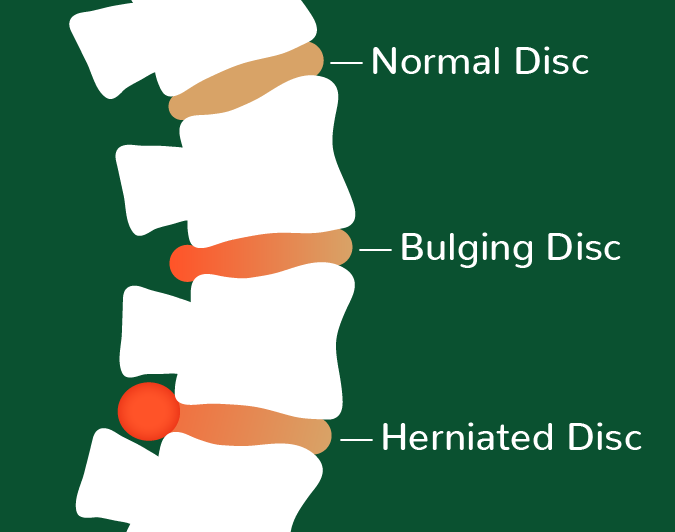
What Causes a Herniated Disc in the Lower Back?
The lumbar section of the spine, or lower back, is the most common area for herniated discs.
Like the cervical and thoracic areas, two significant ways to herniate a disc are degenerative disc disease and trauma, such as car accidents. Lifting while bending and turning is a good way to herniate a lumbar disc and should be avoided whenever possible. Repetitive pushing, pulling and twisting actions also increase the likelihood of a herniated disc.
The demographic of the 35 to 55-year-old age group sees more herniated discs in their lower back than any other age group. But, as mentioned, we can see herniations at any age.
Males are also twice as likely to suffer from a herniated disc in the lumbar section as compared to women.
We think of trauma as a force hitting your back, much like a football player being tackled or someone in a car accident. However, the two most significant risk factors for lower back troubles are heavy lifting and a sedentary lifestyle, including prolonged sitting.
Dr. Galante has been certified in the Cox Technic for the lumbar spine for over 20 years and has treated hundreds of lumbar herniations!
What are Herniated Disc Symptoms?
But how do you tell if you’re suffering from a herniated disc? There can be many factors in determining whether you have this particular issue. If you have any of the symptoms below, you should be examined by a doctor with expertise and experience with disc herniations, as these conditions can cause chronic, severe pain if not properly treated.
Acute or severe disc herniations are easily diagnosed due to their classic symptoms. A herniation with mild or moderate symptoms can be harder to diagnose.
Some of the symptoms of a cervical herniation include:
- Neck and shoulder pain
- Pain radiating down from the shoulder blade area
- Mild nerve pressure – we see numbness and tingling down the arm to the fingers
- Moderate to severe nerve pressure – we see aching, burning or sharp pain radiating down the arm to the fingers
- Weakness in the arm (from severe nerve pressure)
- Symptoms are usually in one arm, not both
Some of the symptoms of lumbar herniation include:
- Lower back pain on one side or both
- Pain radiating to one or both buttocks (sometimes pain is only present in the buttocks without lower back pain)
- Mild nerve pressure – we see numbness and tingling down the thigh and calf into the feet and toes
- Moderate to severe nerve pressure – we see aching, burning or sharp pain radiating down the thigh and calf into the foot and toes
- Severe nerve pressure – weakness may be present in the toe, angle and leg
- Symptoms are usually present in one leg, not both
With all herniated discs, your pain may increase with coughing, sneezing, straining to pass stool and even laughing. We recommend you control your allergies to limit coughing and sneezing. Eating a diet high in fiber can decrease constipation and the urge to strain when passing stool.
If you lose bowel or bladder control, go to the Emergency Room immediately!
Sciatica vs. Herniated Disc
People often confuse a herniated disc with sciatica. Remember, a herniated disc is in the spine, where it herniates and puts pressure on the spinal nerve that causes sciatica. The sciatic nerve is being irritated by a herniated disc, causing the classic leg symptoms we discussed above.
If you have sciatica right now, you know the nerves from your lower back run down the buttocks to the thighs and calves, down to your feet and toes. When you feel sciatic or leg symptoms, the actual cause is coming from the lower back area! Usually, you’ll have symptoms in only one leg. However, on occasion, we see symptoms in both legs.
Dr. Galante has been certified in the Cox Technic for the lumbar spine for over 20 years and has treated hundreds of lumbar herniations and sciatica! He even wrote a book on Sciatica – “The Sciatic Survival Guide.”
What are the Herniated Disc Treatment Options?
If you have a herniated disc, then there are several treatment options available to you. However, the safest and most effective way to treat a herniated disc may be through chiropractic care.
Medication
Your doctor may prescribe you medication for your herniated disc. These include over-the-counter medications, which can be ibuprofen, Tylenol or Aleve, meant for mild to moderate pain levels and come with their own set of unwanted side effects.
These over-the-counter medications might combat inflammation and reduce pain in the short term. However, studies have shown that using these types of medications increases your overall time with pain and makes you MORE likely to become a chronic pain patient.
Our chiropractic treatments can target the specific area and provide the care you need to get back to living your fullest life – without increasing your risk of chronic, debilitating pain.
Surgery
The surgical option is immediately necessary for patients with “red flags.” These red flags include things like:
- Loss of control of the bladder or bowel
- Progressive neurological deficit
- Tumor
- Fractures
- And related serious problems
Dr. Galante will refer you for immediate surgery if that is indicated. Otherwise, surgery is a “last resort” and is considered elective.
Spinal surgery comes with risks. We will do everything we can to improve your condition, so we’re not even discussing spinal surgery. Of course, nobody wants to deal with the potential risks, downtime and costs.
Spinal surgery carries a cost of anywhere from $15,000 to $100,000. Visiting a chiropractor costs far less and doesn’t have the same risks as surgery.
Chiropractic Care
Chiropractic care, as you know, is conservative care and may be the best option for herniated disc treatment. Treatment is safe, effective and affordable – without side effects or downtime. We will consider various treatment methods and come up with the best program to suit your individual needs.
The herniated disc treatment non-surgical route is highly recommended because the benefits are long-lasting and offer affordable, quality care.
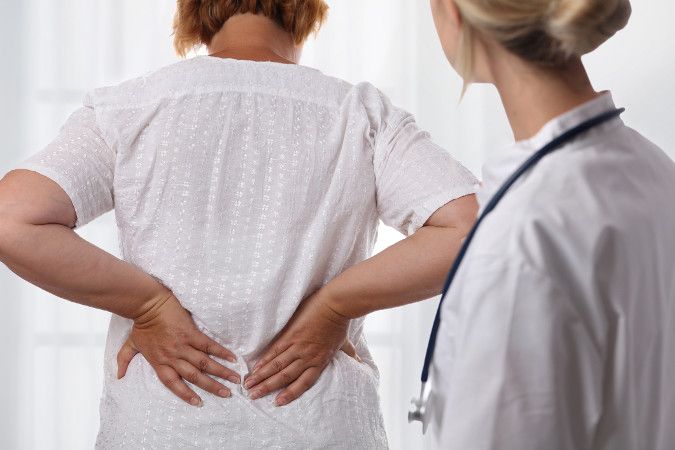
What Are Herniated Disc Chiropractic Treatment Techniques?
Your ailment can be relieved with different treatment options. A chiropractor will usually prescribe you a combination of the herniated disc treatment plans.
What are some of the herniated disc chiropractic treatment techniques?
Cox Technic
The Cox Technic, developed over 50 years ago, gently manipulates the spine to reduce pain. You lay on a specialized table, and the chiropractor controls the movements.
Each movement is coordinated to bring you relief by gently “flexing” the spine. These pain-free motions can cause inflammation to go down and bring the spinal disc back where it needs to be. The Cox Technic also helps to decrease the pressure on the disc and opens the area where the nerve comes out by 28%.
Vibration Therapy
Vibration therapy, or whole-body vibration therapy, is used to restore muscle strength. Gentle vibrations are sent through your body to restore your posture muscles, reduce pain and inflammation, and increase blood circulation.
Low blood circulation, as said above, is a cause of a herniated disc. Smokers, in particular, are subject to a herniated disc due to the lack of oxygen in the blood. Vibration therapy helps boost that circulation.
Electrical Stimulation
Electrical stimulation is another herniated disc treatment option. You will have small electric nodes placed on your affected area. These nodes are hooked to a device that delivers electric pulses into the body.
This technique proves helpful in reducing pain and inflammation.
Your chiropractor will most likely prescribe a combination of these herniated disc treatment techniques.
In fact, by effectively using a mixture of these techniques, patients at Algonquin Chiropractic Center see a 50% improvement within the first 2-4 weeks. Each patient is different, and their treatment is different. However, the quality of care each patient receives will get the best possible results.
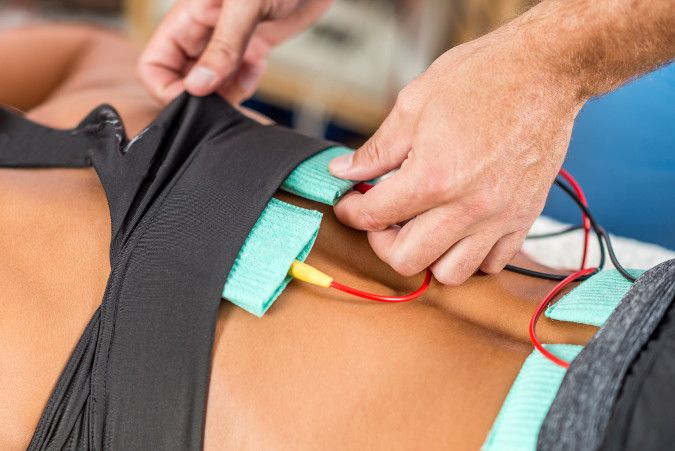
Physical Therapy
Physical Therapy (PT) is a branch of rehabilitative health that uses specific exercises and equipment to help people regain function and strength. Improving posture is a fundamental part of PT and helps patients reduce the risks of further problems.
With a herniated disc, physical therapy is often used to increase core strength, which will help support your spine. Better core strength is associated with a decreased risk of future herniation. Plus, a stronger body is healthier overall.
Physical therapy is often combined with other treatment modalities, like spinal adjustments, within a treatment plan. The use of multiple herniated disc treatment options often lends the best results.
Orthotics
Orthotics correct bodily imbalances caused by poor arch support. These imbalances can increase the risk of disc herniation, especially when doing heavy lifting or lifting while twisting. Why? Because your whole body is oriented differently when you have poor arch support, and the body doesn’t work well when out of balance.
Orthotics are fundamental in treating sciatica, which is often related to disc herniation. When combined with chiropractic care, custom orthotics have been shown to facilitate a 35% reduction in back pain resulting from various conditions.
What Herniated Disc Exercises Can I Do?
In addition to chiropractic care, your chiropractor can have you on a regiment of exercises designed to reduce pain levels and strengthen your muscles.
Each of the exercises might depend on your individual needs and abilities. These exercises have a common goal, however.
You can find herniated disc exercises like the knee-chest and cat-camel on our YouTube channel here.
Improve Your Posture
Good posture can give you a stronger core, decrease pressure on spinal discs and give you better spinal health.
Studies show improving your neck and upper back posture is helpful for lower back herniated discs. Improving lower back posture and core strength can help neck herniated discs.
Strengthen Your Core
Your spinal stability depends on two tissues: your spinal muscles and spinal ligaments.
Muscles are the first to stabilize the spine while moving. If your spinal muscles are weak or not firing properly, you’re more likely to injure your neck and lower back. There are patients who make a trivial movement (like a twist or turn) and have severe pain.
Ligaments are second in line for stability. To be honest, ligaments can’t handle much pressure and will fail at relatively low spinal loads. This is why the surrounding muscles must be not only strong but firing correctly.
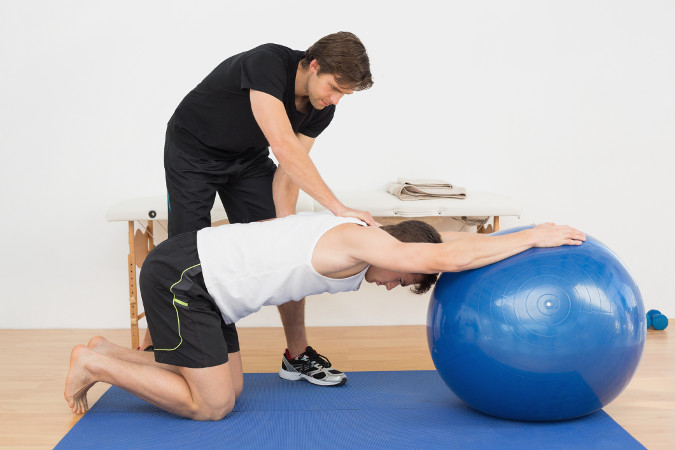
How Do I Prevent a Herniated Disc?
You can do all the right things and still end up injuring your neck or lower back and herniating a spinal disc. Doing some of the items on the list below can decrease your chances of a severe disc herniation. These include:
- Keep good posture
- Exercise regularly
- Eat an anti-inflammatory diet
- Don’t smoke
- Proper nutrition is critical – consult with Dr. Galante
- Maintain a healthy body weight
- Get “maintenance adjustments” regularly
- Do cervical and lower back stabilization exercises
- Come in for an evaluation at the first sign of neck or lower back pain – don’t wait because we can prevent a serious problem by catching it early
Are You Suffering from a Herniated Disc in Algonquin?
If you’re suffering from pain, don’t let it stop you from living your best life! A herniated disc can lead to other complications later in life, like arthritis and stenosis, so don’t put off having it checked out.
A herniated disc is a common source of pain. If you think you have a herniated disc or want to see how to prevent one, please reach out to us. Algonquin Chiropractic Center has offered herniated disc treatment in Algonquin, IL, for over 20 years. Don’t let the pain stop you from living a full life. Call us at (847) 854-2000 to make an appointment.
